Choosing a dog collar is not as simple as selecting a stylish one that catches your eye. It involves assessing your needs as a dog owner, picking the right one that fits your pooch’s size and activities, and most importantly, complying with the pet ownership requirements of your country.
This guide will acquaint you with the different types of dog collars, their various functions, and some noteworthy dog collar products sold in the market today.
Types of dog collar
1 Flat Collar
Practical and durable for everyday use, the flat collar is the most common type of collar used by dog parents. It comes in a flat strip of material (usually made of cotton, leather, nylon, or polyester), a quick-release buckle or belt closure, and a D-ring loop that can be connected to a leash. Sometimes, an identification tag (to help identify the pet and its owner) or extra padding (to provide maximum comfort) is included.
Sold in an assortment of colours, designs, and sizes, this type of collar is relatively easy to put on or take off your pet’s neck. It is also known to evenly distribute the pressure on your dog’s windpipe when he pulls at his leash. Dogs that stay mostly indoors can use flat collars made out of cotton, while more active, outdoorsy ones can benefit from using flat collars consisting of leather, polyester, nylon, neoprene, or biothane materials.
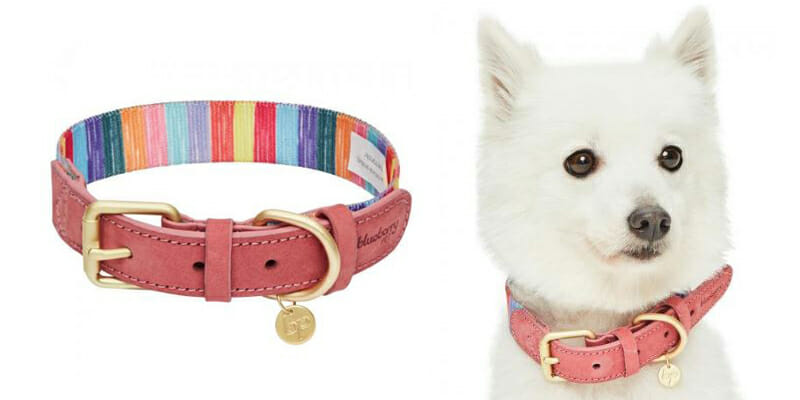
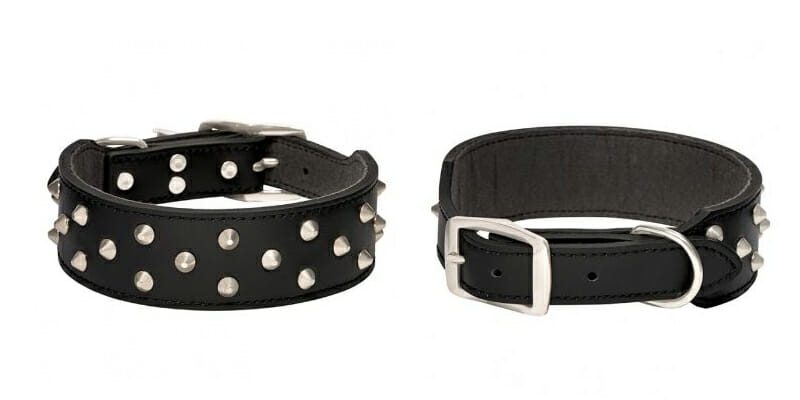
2 Rolled collar
The rolled collar practically has the same parts of the flat collar except for the fabric strip that goes around your dog’s neck. Instead of a flat strip of fabric, this type features a rounded piece that looks thinner in plain sight, but is actually thicker in diameter. Commonly made out of leather or faux leather, the rolled fabric creates a stronger and more durable collar.
A long-haired dog will benefit from having this type of collar since it is said to reduce matting, flat spots, and coat damage. However, the rolled collar isn’t recommended for pooches who are known pullers since it applies more pressure on his windpipe when he tugs the leash.
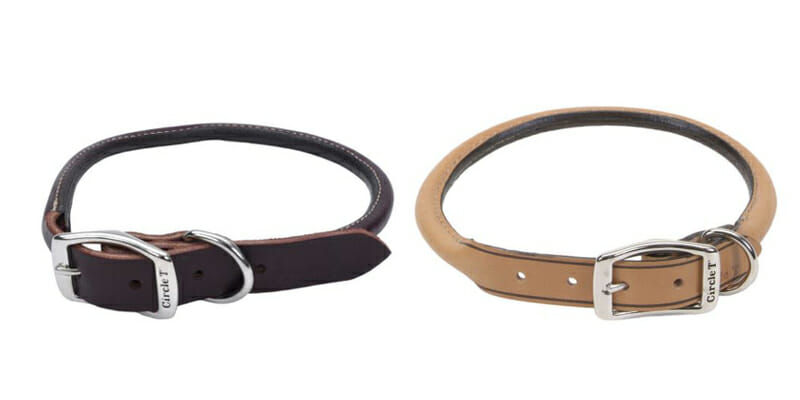
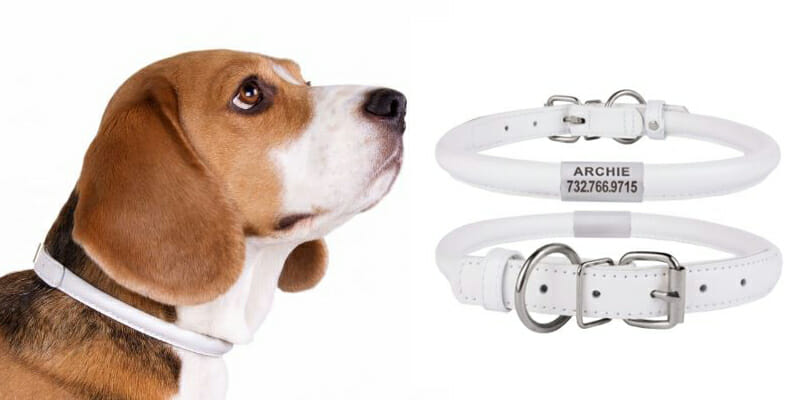
3 Slip collar
This type of dog collar doesn’t have the typical buckle or belt. Instead, you’ll have to insert one end of the collar through a ring that acts as its lock. The ring is then placed at the back of your dog’s neck and connected to a leash. Common materials used for slip collars include braided and rolled fabric, nylon rope, or metal chain.
The slip collar is used by experienced trainers to correct dog behaviour. When your dog pulls on his leash, it should appropriately tighten around his neck without hurting him. The pressure will discourage him from repeating unwanted actions. If you plan on using a slip collar, always use it with proper training and during supervised times, or it may cause strangulation or permanent damage to your dog’s body.
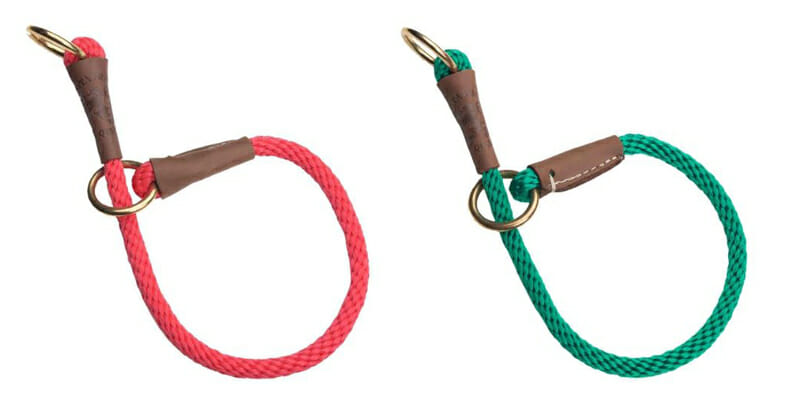
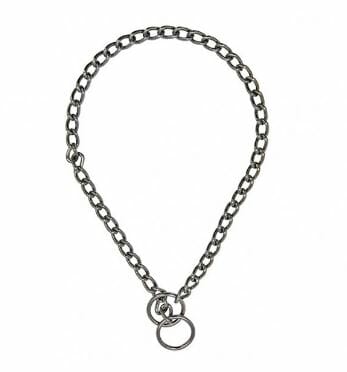
4 Martingale collar
This double-loop collar was originally created for dogs with narrower heads and thicker necks (such as Greyhounds and Whippets) that could easily slip out of traditional flat collars. The first adjustable loop goes around your dog’s neck, while the second loop holds the ends of the first loop via two metal hoops. The second loop serves as a moving triangular section that tightens and loosens around your dog’s neck when needed.
The martingale collar is an effective collar to use for dogs that are in the process of learning leash manners or those that are easily distracted by other outside factors. It comes in a combination of materials such as heavy-duty nylon and steel chain. Because of its more complex design, this type of collar shouldn’t be left on your dog when he is unattended or taking an off-leash walk. The collar loop might accidentally get caught on something and cause injury to your pooch.
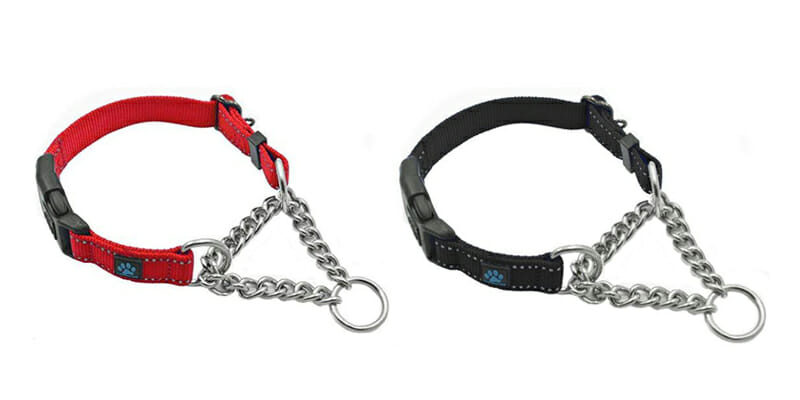
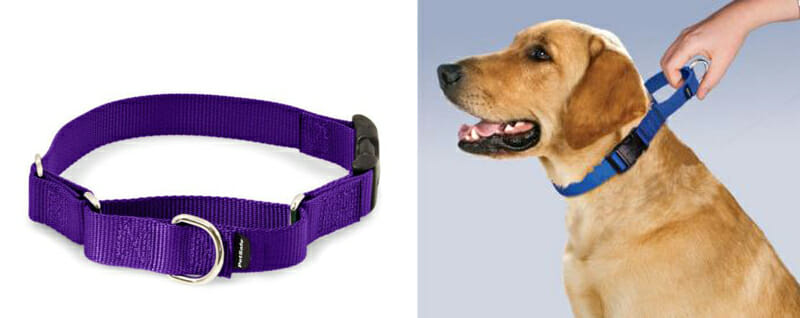
5 Smart collar
Invest in a smart collar if you’d like to know more about what’s happening to your dog when you’re not around. With it, you can instantly find out where he’s at (GPS tracking), what he’s up to (activities and behaviour monitoring), or how he’s feeling (temperature tracking). While pricier smart collars have impressive high-tech features, others are presented as affordable add-ons to be attached to your existing dog collar.
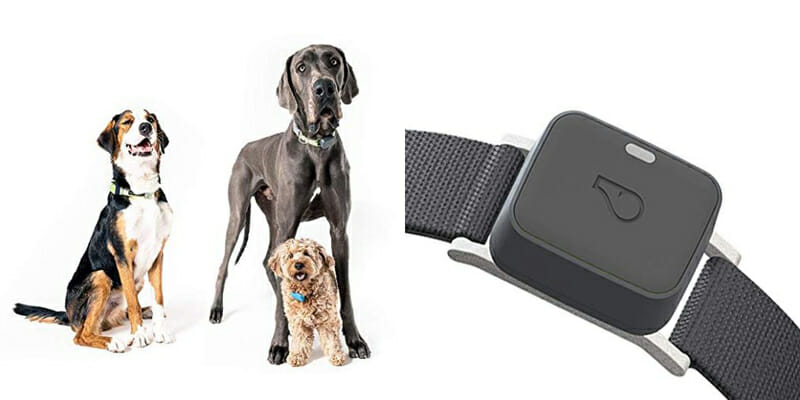
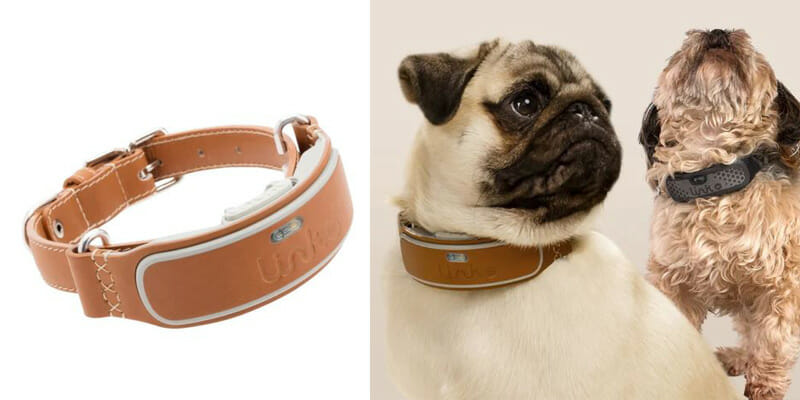
6 Elizabethan collar
Not all dogs need medical collars, but it merits a mention because your pooch may need to wear it at least once in his life. Inspired by the ruff worn during Elizabethan times, the Elizabethan collar or e-collar is a truncated cone that is placed over a dog’s head to help him heal faster. It serves as an obstruction that prevents him from scratching his head and neck as well as licking and chewing his body—which isn’t good if he has a major wound, skin allergy, or fresh suture somewhere. Commonly made from foam, nylon, plastic, or cardboard, the cone is secured around your pet’s collar through adjustable strings or straps. It can be worn by your dog 24/7 until he has completely healed.
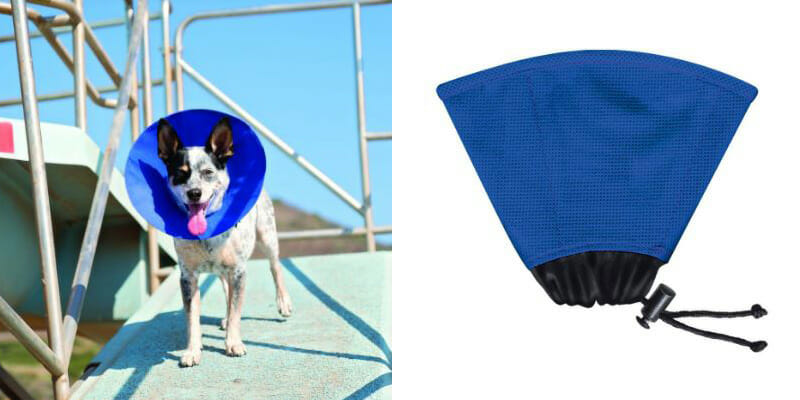
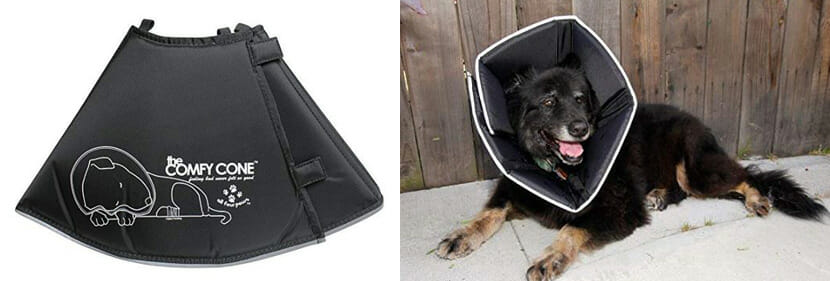
In conclusion
Talk to your veterinarian to discover the best collar options for your pup! Do the necessary research to make sure you choose the right collar for your dog’s body type, temperament, and lifestyle. Be a responsible paw parent by regularly checking if his collar fits right. Most importantly, make sure to use the appropriate collars that will not harm your pooch in any way.
Leave a comment
Your email address will not be published. All fields are required.